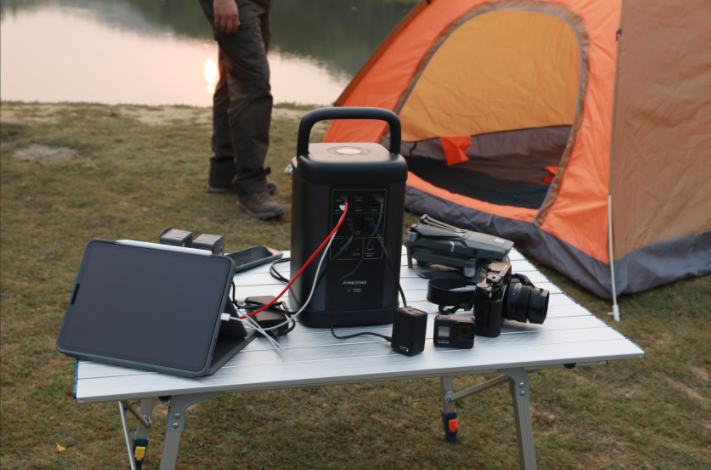Why is portable power station gaining popularity now?
Portable power station: from niche to mass, from billion to tens of billions
Portable power station: Small Size, Utility uses.
Portable power station is a small energy storage system that is safe, portable, stable and environmentally friendly. It uses a built-in high energy density lithium-ion battery to provide a power system with stable AC and DC output.
It can be regarded as a “large outdoor power bank”, with a charge capacity of 0.2-2kWh, and a larger output power of 100-2200W. It is equipped with AC, DC, Type-C, USB, PD and other interfaces. It matches the mainstream electronic equipment on the market and is widely used in outdoor travel, emergency disaster preparedness and other scenarios.
Portable power station is small in size and light in weight, suitable for scenarios that require mobile use of electricity. Combined with solar panels, it can achieve fast charging, so it is widely used in outdoor activities and emergency disaster relief.
In outdoor activities, portable power station is used in various outdoor scenarios such as hiking, camping, fishing, cycling, and RV travel, and can provide green power for mobile phones, computers, photography equipment, lighting and other equipment.
Emergency disaster preparedness, portable power station can be used as an emergency power source to meet the demand for power in natural disasters or emergencies, realize off-grid power supply, and ensure the power needs of the people in emergency situations. As consumers’ awareness of disaster protection increases, the penetration rate of portable energy storage is expected to deepen.

Divided by the amount of charge: The charge amount of 0.5-1kwh is the mainstream product in the current market, with a high penetration rate, relatively simple product structure and system, and is developing in the direction of miniaturization, portability and fashion.
Use with portable solar panel: Some models of products support the use of solar panels, which can be charged through solar panels.
Taking GoPower’s Fremo X700 as an example, installing a Hyper 100 can charge 80% in about 6.5 hours, extending the outdoor use time of portable energy storage products.

With the continuous recurrence of the epidemic, people have to choose local activities as a last resort. Therefore, people’s demand for outdoor activities is stronger. The epidemic has forced the reduction of cluster travel, and then turned to family outdoor activities with weak clusters to meet people’s social needs. .
Secondly, the sudden epidemic situation and the frequent extreme weather in recent years have made emergency disaster preparedness a new normal, and the application of portable energy storage in the fields of epidemic prevention and anti-epidemic, flood fighting and disaster relief, fire rescue and other fields has also increased significantly.
In the past, the power supply for outdoor and emergency situations was mainly provided by small fuel generators, but fuel generators are noisy, complicated to operate and pollute the environment. Diesel generators are large and limited in use in mobile charging scenarios.

With the development of electrochemical energy storage technology, lead-acid batteries are the first to replace diesel generators, but lead-acid batteries have a short service life and poor endurance.
While the initial capital expenditure of lithium batteries is only 1.4 times that of lead batteries, the total cost of ownership of lithium batteries for 10 years can be saved by 10%-30%. Compared with lead-acid batteries, lithium batteries have the advantages of longer service life, lower failure rate, lighter weight, smaller size, higher energy density, and faster charging. The lithium iron phosphate used in the Fremo X700 is more than 5 times longer than the ternary lithium battery.
In the future, with the continuous optimization of lithium battery energy density technology and battery system design, the endurance and stability of lithium batteries will continue to improve, and the competitiveness of lithium battery energy storage products compared with other energy storage technologies will be further highlighted, thereby promoting portable energy storage.

